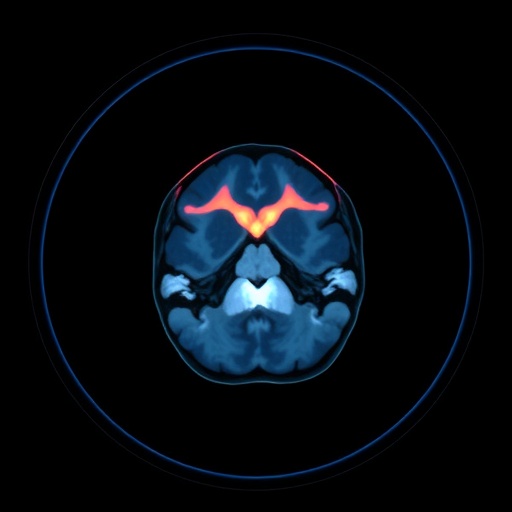In the evolving landscape of cancer treatment, radical cystectomy remains a cornerstone procedure for invasive bladder cancer, often necessitating complex urinary reconstruction. The decision-making process surrounding these reconstructions is notoriously challenging, intricately involving evaluations of patient preferences, clinical expertise, and overall quality of life considerations. A recently published study delves deeply into this critical juncture, providing fresh insights into the shared decision-making (SDM) practices between patients and healthcare providers in China—a context where cultural, systemic, and educational factors distinctly shape clinical interactions.
This qualitative investigation, conducted at a leading tertiary hospital, employed purposive sampling to engage both patients undergoing radical cystectomy and the healthcare professionals guiding their care. Through in-depth, semi-structured interviews, the researchers captured a broad spectrum of experiences and perceptions. Thematic analysis of these narratives uncovered significant themes revealing both barriers and facilitators that underpin the SDM processes in urinary reconstruction.
Patients’ autonomy in decision-making emerged as a complex theme influenced by varying levels of participation, confidence, and anxiety. Many patients exhibited hesitancy in asserting preferences, often deferring heavily to medical authority due to cultural norms stressing physician dominance and trust. However, the study elucidated a nuanced balance wherein providers recognized the importance of fostering patient trust and preferences but struggled with implementing effective strategies to enhance patient engagement consistently.
A fundamental barrier identified was patient access to and comprehension of medical information. Diverse and sometimes unreliable information sources contributed to confusion, compounding difficulties for patients to fully grasp the implications of different reconstructive options. Healthcare professionals attempted to bridge this gap through tailored communication strategies, yet persistent limitations in health literacy constrained these efforts. The study highlights the intricate dynamics of medical communication where the translation of technical knowledge into patient-understandable terms is both an art and a science.
Intriguingly, the theme of professional expertise juxtaposed with occupational burden was prominent. Patients generally held deep respect for physicians’ authority and valued their clinical skills. Still, providers expressed significant role strain and emotional challenges associated with managing heavy caseloads and the psychological demands of guiding patients through life-altering surgeries. These systemic pressures inevitably affected the quality and depth of collaborative decision-making interactions, illuminating the urgent need for institutional reforms that support clinician wellbeing.
Social security and educational structures surfaced as pivotal determinants influencing SDM efficacy. The study exposed gaps in health education within the broader population and inadequate protective policies safeguarding patient rights in clinical settings. These deficiencies collectively engendered an environment where uninformed consent risked becoming perfunctory rather than a meaningful, deliberative process. Without comprehensive policy reforms and educational campaigns, SDM risks remaining a lofty ideal rather than an ingrained clinical practice.
The implications of these findings extend beyond the immediate clinical milieu. They underscore the importance of multi-level interventions to enhance SDM, advocating for patient-centered education initiatives that empower individuals to actively participate in reconstructive choices. Furthermore, professional communication training tailored to address cultural sensitivities and cognitive barriers could substantially improve comprehension and trust. Policymakers are called upon to recognize and address systemic issues such as clinician workload and structural health literacy deficits to facilitate a truly collaborative healthcare environment.
This study’s methodical thematic analysis provides a robust framework for understanding the nuanced interplay of individual, professional, and systemic factors in bladder cancer care. By contextualizing SDM within China’s unique healthcare and cultural landscape, it fills a critical knowledge gap and sets the stage for targeted innovations. Such research is timely and essential, given the universal challenges surrounding shared decision-making in complex surgical treatments.
Moreover, the study hints at the psychological dimensions underpinning patient and provider experiences. Anxiety and uncertainty permeate decisions about urinary reconstruction, with ramifications extending to postoperative satisfaction and quality of life. Addressing these emotional factors requires integrating psychosocial support mechanisms as part of standard care protocols to create a more supportive decision-making atmosphere.
Equally important is the recognition that shared decision-making is not merely a transactional exchange of information but a relational process co-constructed through dialogue, empathy, and mutual respect. Achieving this ideal demands sustained commitment from healthcare systems to nurture environments where patients feel safe, sufficiently informed, and genuinely involved.
The challenges illuminated by this study raise questions about the equity of access to participatory healthcare models. Current inconsistencies in patient education and clinician capacity point to disparities that may exacerbate health outcomes disparities. Addressing these inequities must become an integral element of any strategy aiming to elevate SDM practices universally.
Innovative technological solutions, such as decision aids and digital health platforms, could potentially mitigate information gaps and support patient autonomy. However, their successful implementation requires careful adaptation to local contexts and consideration of digital literacy levels among diverse patient populations.
In conclusion, this foundational study offers a compelling examination of shared decision-making within urinary reconstruction after radical cystectomy in China. It reveals that while the principle of patient-centered care is recognized, substantial barriers rooted in cultural norms, systemic constraints, and educational deficiencies persist. Bridging these divides through targeted, multifaceted interventions presents a promising pathway to enhancing both patient outcomes and provider satisfaction in urologic oncology.
Future research should explore longitudinal outcomes associated with improved SDM interventions to rigorously evaluate benefits and identify best practices. Likewise, comparative studies across different healthcare systems could expand understanding of how cultural and structural factors uniquely shape decision-making landscapes. Such endeavors will be critical in advancing personalized, effective cancer care worldwide.
The journey towards seamless shared decision-making in bladder cancer treatment is complex but indispensable. This study paves the way for critical dialogues and actionable solutions that hold the potential to transform clinical practice, enrich patient experiences, and ultimately improve survivorship in a challenging disease domain.
Subject of Research: Shared decision-making in urinary reconstruction among radical cystectomy patients in China.
Article Title: Shared decision-making in urinary reconstruction among radical cystectomy patients: a thematic analysis of patient and provider perspectives in China.
Article References: Li, W., Shi, Y., Pu, L. et al. Shared decision-making in urinary reconstruction among radical cystectomy patients: a thematic analysis of patient and provider perspectives in China. BMC Cancer 25, 1590 (2025). https://doi.org/10.1186/s12885-025-15052-5
Image Credits: Scienmag.com
DOI: https://doi.org/10.1186/s12885-025-15052-5
Tags: barriers to patient participationcancer care quality of life considerationscancer treatment decision-makingcultural factors in medical decisionshealthcare provider roles in SDMpatient autonomy in Chinaqualitative research in healthcareradical cystectomy patient perspectivesshared decision-making in healthcarethemes in patient-provider communicationtrust in physician-patient relationshipsurinary reconstruction challenges





